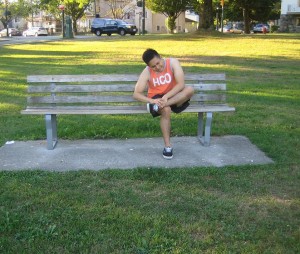It is important to note that most of the bones in the body are connected to each other at the joints. There are some bones that are not connected to any other bone. These are connected only to tendons or simply embedded in muscles which are called as sesamoids.
The kneecap is the biggest sesamoid in the body. There are two other small sesamoids present on the base of the forefoot close to the big toe – one on the exterior side of the foot and the other close to the center of the foot.
How are the sesamoids injured?
The sesamoids work similarly to pulleys which provide an even surface over which the tendons glide, thus improving the capability of the tendons to convey muscle forces. The sesamoids in the forefoot help in bearing weight as well as raise the bones of the big toe.

Just like with other bones, the sesamoids can also break. The tendons that surround the sesamoids can become inflamed or irritated. The condition is called as sesamoiditis which is a form of tendinitis. This condition is quite common among runners, ballet dancers and professional athletes.
Symptoms of sesamoid injury
- Pain centered beneath the big toe on the ball of the foot. If an individual has sesamoiditis, the pain can develop in a gradual manner.
- There is pain and difficulty in bending or straightening the big toe
- Bruising and swelling may or may not be present.
Treatment for sesamoiditis
The treatment for sesamoiditis will not require surgery. Nevertheless, if the conservative measures fail, the doctor will recommend surgery to remove the sesamoid bone. Initially, the doctor will recommend the following:
- The individual should stop the activity that triggered the pain
- Rest and apply an ice pack on the sole of the foot. Do not apply ice directly on the skin. Make sure that the ice pack is covered with a clean towel or cloth.
- Use soft-soled, low-heeled shoes. Even stiff-soled shoes such as clogs can also be used.
- Utilize a felt cushioning pad to relieve stress
- Resume activity in a gradual manner and continue to use a cushioning pad made out of dense foam rubber beneath the sesamoids for support.
- Tape the big toe so that it remains faintly bent in a downward manner
- The doctor might recommend a steroid injection to reduce the swelling
If the symptoms are still present, using a removable short leg brace for 4-6 weeks is usually advised.
Treatment for sesamoid fractures
When it comes to sesamoid injuries such as a sesamoid fracture, the doctor might recommend conservative treatments before surgery is considered.
- A short leg fracture brace or stiff-soled shoe is recommended
- The individual is advised to wear a J-shaped pad around the area of the sesamoid to reduce pressure as the fracture heals.
- Pain medications such as ibuprofen or aspirin can be given
- Cushioning pads or other orthotic devices are useful as the fracture heals
